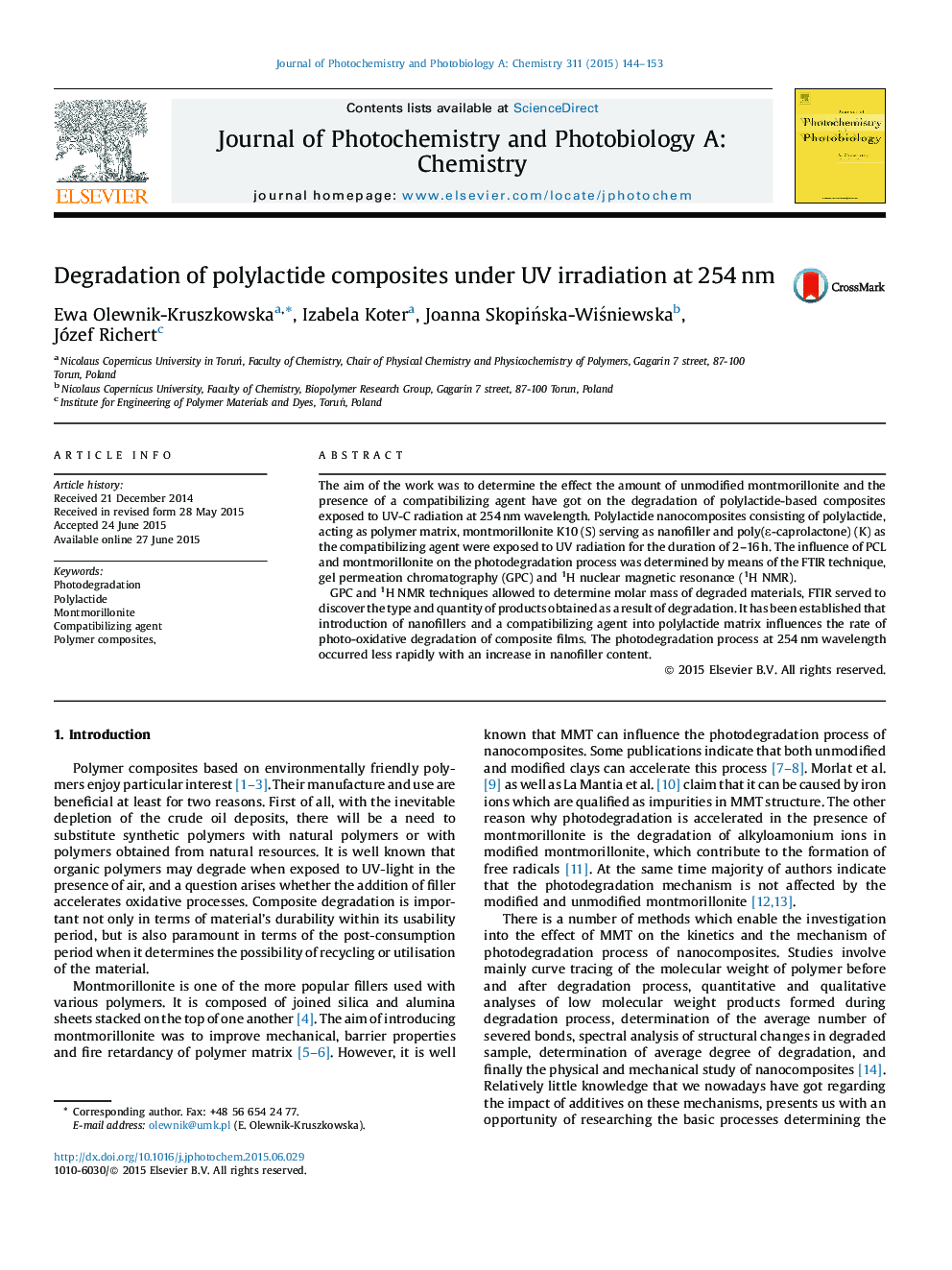| Article ID | Journal | Published Year | Pages | File Type |
|---|---|---|---|---|
| 26120 | Journal of Photochemistry and Photobiology A: Chemistry | 2015 | 10 Pages |
•Polylactide based composites were exposed to UV radiation at 254 nm wavelength.•Mechanism of photodegradation process was established with FTIR technique.•The photodegradation of investigated materials proceeds according to second order kinetics.•Results indicate that under UV-C radiation montmorillonite delays decompositions of PLA matrix.•Introduction of poly(ϵ-caprolactone) into PLA–montmorillonite system accelerates photodegradation process of investigated materials.
The aim of the work was to determine the effect the amount of unmodified montmorillonite and the presence of a compatibilizing agent have got on the degradation of polylactide-based composites exposed to UV-C radiation at 254 nm wavelength. Polylactide nanocomposites consisting of polylactide, acting as polymer matrix, montmorillonite K10 (S) serving as nanofiller and poly(ϵ-caprolactone) (K) as the compatibilizing agent were exposed to UV radiation for the duration of 2–16 h. The influence of PCL and montmorillonite on the photodegradation process was determined by means of the FTIR technique, gel permeation chromatography (GPC) and 1H nuclear magnetic resonance (1H NMR).GPC and 1H NMR techniques allowed to determine molar mass of degraded materials, FTIR served to discover the type and quantity of products obtained as a result of degradation. It has been established that introduction of nanofillers and a compatibilizing agent into polylactide matrix influences the rate of photo-oxidative degradation of composite films. The photodegradation process at 254 nm wavelength occurred less rapidly with an increase in nanofiller content.
Graphical abstractFigure optionsDownload full-size imageDownload as PowerPoint slide
